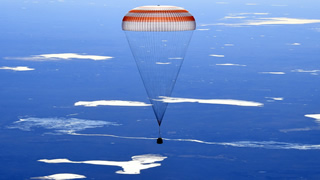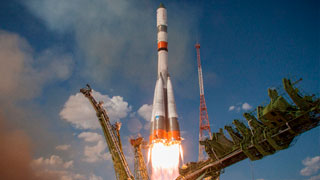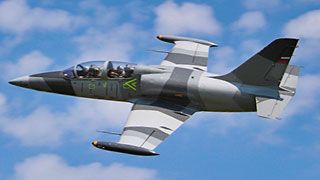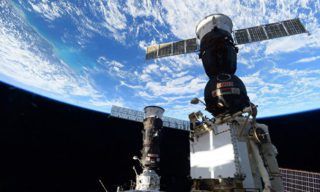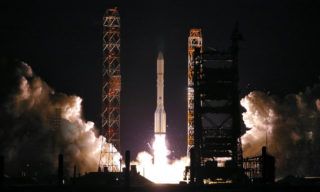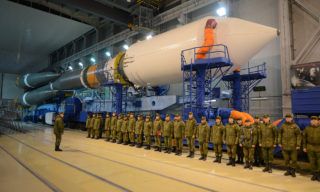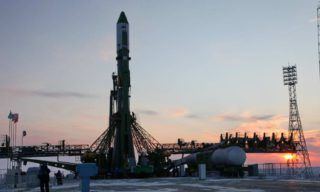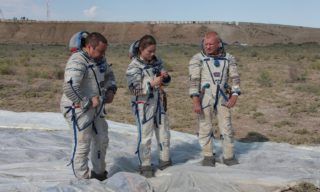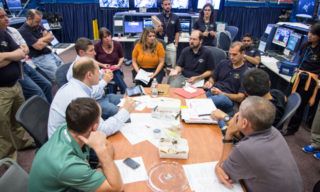A spectacular double crater dominates this scene on Mars, pictured by the CaSSIS camera on the ESA-Roscosmos ExoMars Trace Gas Orbiter on 7 June 2021. The crater duo is located in an otherwise smooth plain of Arcadia Planitia [39.1°N/174.8°E].
Double craters like these are formed when two meteorites impact the surface simultaneously and in very close proximity. The two impactors would have originated from the same object that broke apart when it entered the martian atmosphere. The two craters are of similar size, which means that the two projectiles were approximately the same size as well.
During the impact, the interaction of the two shockwaves created an ejecta blanket with a butterfly shape. The remarkable linear streaks in the ejecta material radiates around the double crater, and are an indicator of the good level of preservation of this feature.
To the north are large isolated hills that likely predate the formation of the double crater.
TGO arrived at Mars in 2016 and began its full science mission in 2018. The spacecraft is not only returning spectacular images, but also providing the best ever inventory of the planet’s atmospheric gases, and mapping the planet’s surface for water-rich locations. It will also provide data relay services for the second ExoMars mission comprising the Rosalind Franklin rover and Kazachok platform, when it arrives on Mars in 2023.

